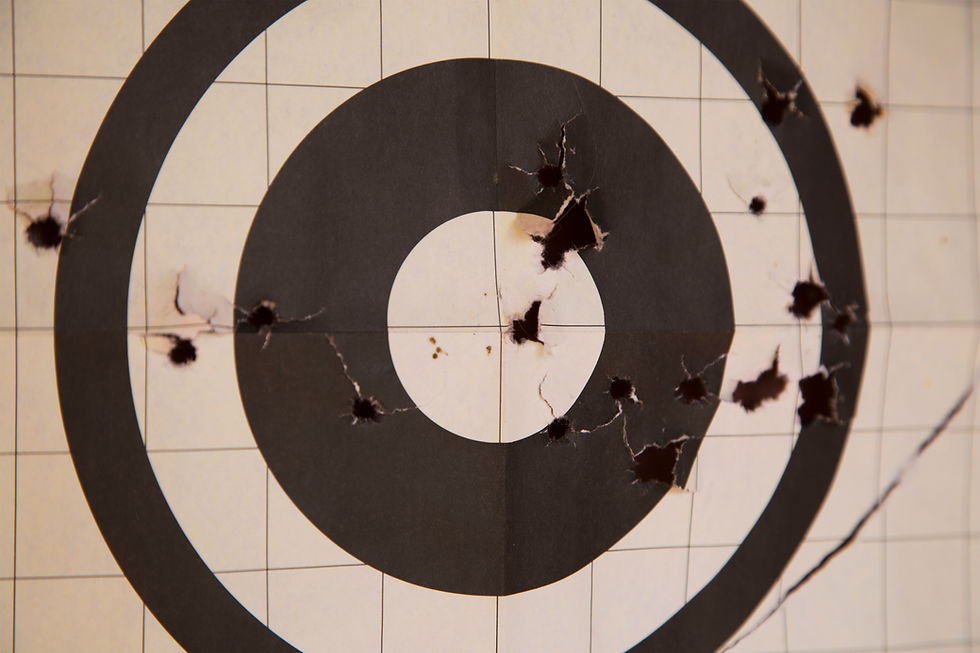Why Armed Educator Policies Miss the Mark
- Shawn Sheehan
- Jun 18, 2023
- 2 min read

“Firearms in a classroom setting present enormous risk to life, limb, and mental well-being,” (Rogers et al., 2018). These words are from graduate public health students who have joined the fight alongside many educators, education organizations, and policymakers against arming teachers. Here are three reasons why armed educator policies “miss the mark” when addressing school safety.
1. Texas school employees don’t want to be armed. In a survey following the school shooting in Uvalde, Texas, the Texas American Federation of Teachers found that 77% of roughly 5,000 Texas school employees indicated they did not want to be armed or expected to intercept a gunman (AFT, 2022). Over the last decade, only 84 school districts of Texas’ more than 1,200 have chosen to participate in the school marshal program (McGee, 2022). There appears to be little appetite across the state for arming educators despite recurring school shooting incidents.
2. Mistakes could be fatal. A Texas superintendent resigned after his gun was found by a third grade student in a bathroom stall (Lopez, 2023). A student grabbed an officer’s gun while being subdued, a teacher unintentionally fired a gun during a safety demonstration, and a teacher’s loaded gun fell out of his waistband after doing a cartwheel (“Every Incident of Mishandled Guns in Schools,” 2023). While we have yet to see a student be fatally wounded by a teacher’s firearm, these examples highlight the tragic potential that exists when arming school employees.
3. Extensive training is needed. Appropriate training (and funding for that training) is among the top concerns for principals if armed educator policies are in place (Weiler & Armenta, 2014). “I’m not confident that we can train educators to respond appropriately to guns. Their number one goal should be getting students into a safe place, not worrying about getting a gun and using it,” (p. Weiler & Armenta, 2014, p. 117). Teachers already have an abundance of laws, teaching strategies, curriculum developments, and classroom management techniques on their plates. Firearms training should not be added to their professional development regime.
These are just three reasons why policymakers and district leaders should avoid armed educator policies. Instead, more research and attention should be devoted to alternatives such as panic buttons, student mental health resources, and gun control policies.
References
AFT, T. (2022, June 8). Teachers union survey shows school employees overwhelmingly (77%) do not want to be armed. Texas AFT. https://www.texasaft.org/releases/teachers-union-survey-shows-school-employees-overwhelmingly-77-do-not-want-to-be-armed/
Every Incident of Mishandled Guns in Schools. (2023, June 17). Giffords. https://giffords.org/articles/every-incident-of-mishandled-guns-in-schools/
Lopez, B. (2023, February 23). Texas superintendent resigns after student finds his gun in school bathroom. The Texas Tribune. https://www.texastribune.org/2023/02/23/texas-superintendent-gun-school-safety/
McGee, K. (2022, June 7). Texas Republicans want to arm more school employees, but few districts are opting in. The Texas Tribune. https://www.texastribune.org/2022/06/07/texas-school-marshal-program/
Rogers, M., Lara Ovares, E. A., Ogunleye, O. O., Twyman, T., Akkus, C., Patel, K., & Fadlalla, M. (2018). Is Arming Teachers Our Nation’s Best Response to Gun Violence? The Perspective of Public Health Students. American Journal of Public Health, 108(7), 862–863. https://doi.org/10.2105/AJPH.2018.304477
Weiler, S. C., & Armenta, A. D. (2014). The Fourth R—Revolvers: Principal Perceptions Related to Armed School Personnel and Related Legal Issues. The Clearing House: A Journal of Educational Strategies, Issues and Ideas, 87(3), 115–118. https://doi.org/10.1080/00098655.2014.891891







Comments